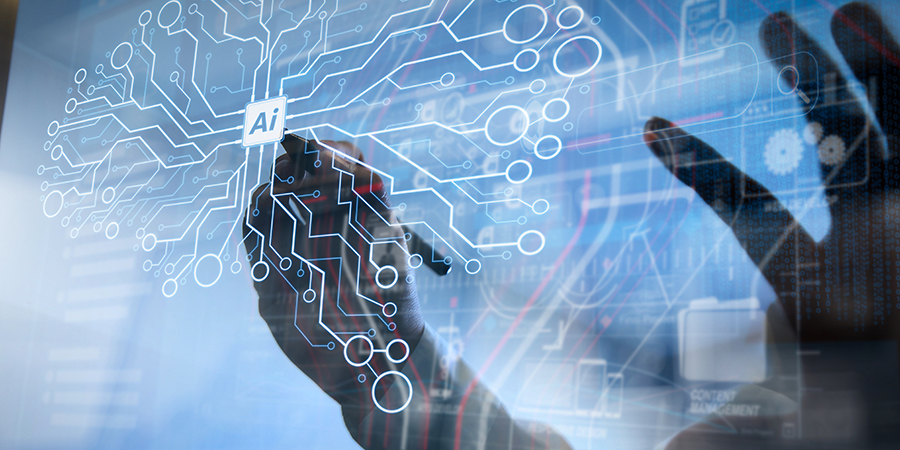AI engineering involves designing, implementing, and managing machine learning (ML) algorithms and artificial intelligence (AI) tools. Across enterprises and other entities worldwide, AI engineers are needed to properly automate processes, enhance customer services, analyze data, increase output, and gain a competitive edge, among others.
Global spending on AI and cognitive systems reached over $55 billion in 2021, which is somehow correlated with the number of enterprises using AI in business growing by 270% between 2015 and 2019. More so, over 90% of leading businesses invest in AI continuously, which could push the global AI market value to be worth beyond $260 billion by 2027.
Without a doubt, there is widespread adoption of AI in businesses as companies are finding new ways to monetize, innovate, and expand. By applying AI and ML, businesses can utilize the massive amounts of data they generate daily to improve and simplify day-to-day tasks. Technologies like speech recognition, business process management, image processing, and robotic process automation are some of the AI technologies changing the world today.
Companies need AI engineers to put these systems in place, maintain them, and adapt them to changes in the business, coupled with the increasing adoption of cloud-based services. As AI and machine learning capabilities mature, the core pillars of AI engineering should be mastered and integrated within businesses’ systems. This is paramount to transforming business and technology processes and delivering optimal business value.
AIOps
The concept of AIOps – artificial intelligence for IT operations – aims to move away from the classic observe-engage-act model to a more predict-prescribe-prevent policy.
Having said that, AIOps is an approach to manage complex IT operations. This is done by running on multi-layered technology platforms that harness machine learning, predictive analytics, and AI to automate, enhance, and improve IT operations.
Central to the success of AIOps is big data, and through algorithms on data selection, pattern discovery, inference, collaboration, and automation, the AIOps platform acts as the brain that brings together these tools.
AIOps solutions provide greater visibility of IT environments that are becoming increasingly distributed and hybrid in nature. By aggregating data from multiple tools and systems and stitching that data together, the platform can advance traditional analytics capabilities and automatically spot and react to issues in real time.
Companies surveyed by Enterprise Management Associates ranked AIOps as the most successful IT analytics investment, making sense as IT is at the heart of digital transformation efforts. With this in mind, AIOps lets organizations operate at the speed that modern business requires. Furthermore, this AI engineering pillar is applicable for event noise reduction, intelligent anomaly detection, capacity analytics, cross-domain actionability and situational understanding, and cloud migration.
The results of the AIOps journey are not immediate, but it exemplifies how automation is important as a business proposition enabled by technology.
DataOps
In short for data operations, DataOps delivers high-quality, on-demand data to organizational customers by speeding up the development and deployment of automated data workflows. It allows feeding data consumers, internal and external stakeholders, and customers the data they need, when they need it.
According to IBM, a proper DataOps framework sets companies apart from others due to improved data quality, self-service access, and clearly defined governance and rules for usage. Leaders are leveraging DataOps to realize increased ROI, gain an edge in AI initiatives, and strategically drive their businesses.
In this collaborative data management practice, the principles of agile development are used to build data pipelines. Central to the success of DataOps is automating and orchestrating data pipelines for the optimization of its health and performance as well as quick and efficient movement of data between various systems.
In this way, accuracy, simplicity, and quality of developing business insights are achieved. Measuring data analytics performance depends on how insightful analytics are delivered with correct data. In parallel, the beginning-to-end orchestration within DataOps is a key driver of analytic success.
An important aspect of AI engineering, data pipelines should be built with a foundation capable of automated detection of abnormalities and security issues in code, configuration, and data. Apart from this, continuous feedback should be provided to avoid errors.
ModelOps
100% of the respondents from The State of ModelOps 2022 report have dedicated budgets for ModelOps; up from 51% in 2021. AI model operationalization also known as ModelOps is the key capability for scaling and governing AI at the enterprise level.
Excelling in a dynamic environment, this AI engineering model can be easily adjusted whenever the defined condition changes. It is a collection of tools, technologies, and best practices to deploy, monitor, and manage AI and decision models such as ML, knowledge graphs, and agent-based models.
It is worth noting that all models degrade, and if they are not given regular attention, performance suffers. This is the reason why ModelOps is crucial for enterprise operations. It is responsible for managing and scaling models to meet demand and continuously monitoring them to spot and fix early signs of degradation.
Based on DevOps principles, its core capabilities include continuous integration/continuous delivery (CI/CD) integration, model development environments, champion-challenger testing, model versioning, model store, and rollback.
Acting as a bridge between data scientists, data engineers, application owners, and infrastructure owners, ModelOps fosters dynamic collaboration and improved productivity. It allows moving models from the lab to validation, testing, and production as quickly as possible while ensuring quality results.
ModelOps platforms and capabilities are used to ensure reliable and optimal outcomes for any and all models in production; providing reliable decision-making and adhering to all regulatory, compliance, and risk requirements and controls. CIOs and IT Operations, working with lines of businesses, are the leaders behind ModelOps execution.










